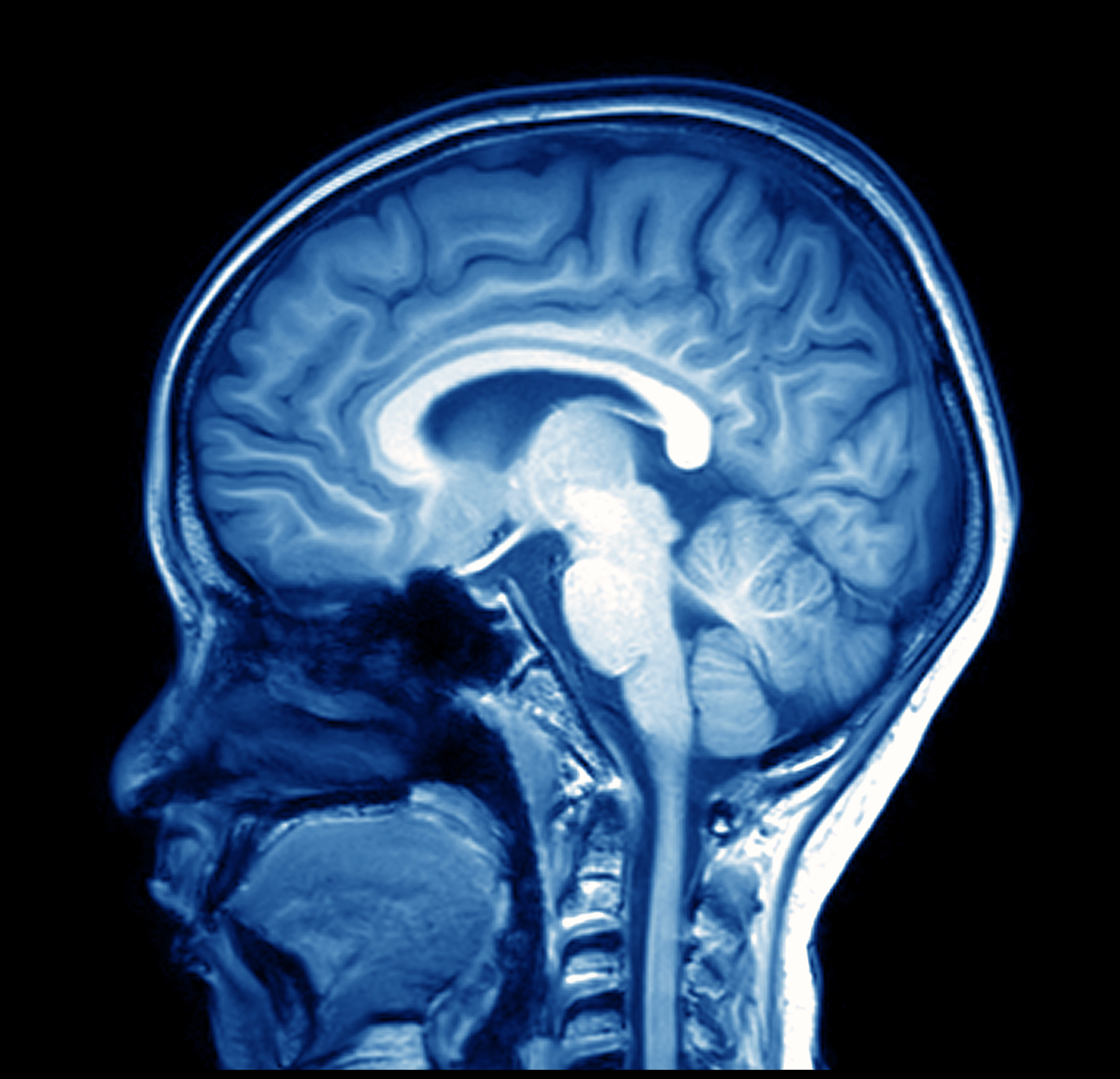Spinal Muscular Atrophy mid-December Roundup: MRI Patterns, Sam68 & More

[et_pb_section admin_label=”section”]
[et_pb_row admin_label=”row”]
[et_pb_column type=”4_4″][et_pb_text admin_label=”Text”]Several new papers on the mechanisms underlying SMA have been published in recent weeks, and data on pertinent SMA treatments continue to be collected and shared. Importantly, researchers also continue to consider how the science and medicine around SMA can best be used to positively impact the lives of SMA patients and their caregivers.
Below is a roundup of the latest in SMA research.
Understanding SMA
MRI patterns of muscle involvement in type 2 and 3 spinal muscular atrophy patients.1
This paper describes an MRI investigation into patterns of muscle involvement in patients with SMA type 2 and SMA type 3. The authors looked at muscle in patients ranging in age from 2 to 45 years and found that all patients experienced both muscle atrophy and muscle infiltration. Though there was variability in the degree of muscle involvement, certain patterns were consistently observed. For instance, specific muscles, like gracilis and adductor longus, were always spared. The authors argue that these data help to clarify the natural history of SMA and can be used to monitor treatment responses in SMA patients.
Read more here.
Sam68 binds Alu-rich introns in SMN and promotes pre-mRNA circularization.2
In this article, the authors describe results of bioinformatics analyses regarding the splicing of introns in the SMN gene involved in SMA. The findings point to a relevant role of inverted repeat Alus (IRAIus), and specifically the Sam68 binding site in SMN IRAIus, which is ultra-conserved across species.
Read more here.
Identification of Novel Microsatellite Markers Flanking the SMN1 and SMN2 Duplicated Region and Inclusion Into a Single-Tube Tridecaplex Panel for Haplotype-Based Preimplantation Genetic Testing of Spinal Muscular Atrophy.3
This piece reports on a case of preimplantation genetic testing in a couple at risk for having a child with SMA. During in vitro fertilization, both SMN1 deletion detection as well as novel markers described by the authors were used. A frozen-thaw transfer of a carrier embryo eventually led to a viable pregnancy and live birth of a baby whose genotype was confirmed via amniocentesis.
Read more here.
Negative cooperativity between Gemin2 and RNA provides insights into RNA selection and the SMN complex’s release in snRNP assembly.4
This article provides information on a study that employed crystallographic and biochemical techniques to investigate aspects of small nuclear ribonucleoprotein (snRNP) core assembly by SMN complex. The data point to negative cooperativity in snRNP assembly and reveal a mechanism that is relevant for the pathogenesis of SMA.
Read more here.
Loss of egli-1, the Caenorhabditis elegans Orthologue of a Downstream Target of SMN, Leads to Abnormalities in Sensorimotor Integration.5
Here, authors summarize a study using a knockout C. elegans model. Specifically, the egli-1 gene, which is a target of the SMN protein that is depleted in SMA patients, was knocked out in these animals. Contrary to the authors’ expectations, motor dysfunction was not observed in this knockout model. Instead, integration of sensory information appeared impaired. According to the authors, these data provide critical information for the function of the egli-1 gene.
Read more here.
ASC1 is a cell cycle regulator associated with severe and mild forms of myopathy.6
This paper provides information on the ASC-1 gene, which has been implicated in SMA and ALS. The authors explain how mutations in the ASC-1 gene TRIP4 leads to the ASC-1 protein depletion that is accompanied by a range of clinical manifestations involving the muscles. Their findings help to elucidate the role of ASC-1 and TRIP4 in the pathophysiology of SMA and other neuromuscular diseases.
Read more here.
Treating SMA
Nusinersen for older patients with SMA: a real-world clinical setting experience.7
This retrospective study aims to fill in gaps in clinical trial data regarding the use of nusinersen in SMA patients. The authors describe their experience using this treatment in 12 SMA patients with scoliosis, ranging in age from 12 to 52. The only observed side effects associated with nusinersen treatment were headache and site pain. Based on their results, the authors conclude that intrathecal nusinersen can be safely used in older SMA patients.
Read more here.
The Effectiveness and Value of Treatments for Spinal Muscular Atrophy.8
This piece is a summary of the status of current treatments for SMA based on an analysis performed by the Institute for Clinical and Economic Review (ICER), an independent organization focused on the value of medical interventions. The organization is supported by major players in healthcare, and the funding for this piece came from the Laura and John Arnold Foundation.
Read more here.
Clinical Implication of Dosimetry of Computed Tomography- and Fluoroscopy-Guided Intrathecal Therapy With Nusinersen in Adult Patients With Spinal Muscular Atrophy.9
This paper describes a study on effective dosing of nusinersen in specific populations of SMA patients. The data showed that in patients with SMA type 2 and SMA type 3, the effective dose of nusinersen was higher if patients had spondylodesis than if they did not. The authors argue that dosimetry should be carefully monitored during nusinersen treatment to minimize radiation exposure in these patients.
Read more here.
Routine Cerebrospinal Fluid (CSF) Parameters in Patients With Spinal Muscular Atrophy (SMA) Treated With Nusinersen.10
The impact of intrathecal administration of nusinersen on CSF parameters is described in this piece. The authors point to the changes in total CSP protein and CSF/serum quotients of albumin that they observed in an SMA patient. They suggest that these changes may be caused by the intrathecal administration of nusinersen, repeated lumbar puncture, or both. They conclude that it is important to perform regular examinations of CSF parameters in patients receiving intrathecal drugs to understand relevant processes and side effects.
Read more here.
Intravenous bisphosphonate therapy in children with spinal muscular atrophy.11
This report is the first of its kind to address the efficacy and safety of intravenous bisphosphonates (IV BP) in SMA patients to treat low bone mineral density and disuse osteoporosis. According to their data, this therapy seems to be effective in reducing fracture rate. In addition, the therapy appears safe, with only minimal side effects. However, given that an atypical femur fracture was observed in one patient receiving this treatment, the authors argue that caution is still required when deploying IV BP.
Read more here.
Patient Focus and Policy Implications
A critical review of patient and parent caregiver oriented tools to assess health-related quality of life, activity of daily living and caregiver burden in spinal muscular atrophy.12
This paper reviews the tools that have been used to assess quality of life, activity of daily living, and caregiver burden as they relate to SMA. According to the authors, the clinical benefits of new treatment strategies for SMA need to be viewed in combination with other effects that these approaches have on the lives of patients and caregivers.
Read more here.
References
1. Brogna C, Cristiano L, Verdolotti T, et al. MRI patterns of muscle involvement in type 2 and 3 spinal muscular atrophy patients. J Neurol. November 2019. doi:10.1007/s00415-019-09646-w
2. Pagliarini V, Jolly A, Bielli P, Di Rosa V, De la Grange P, Sette C. Sam68 binds Alu-rich introns in SMN and promotes pre-mRNA circularization. Nucleic Acids Res. November 2019. doi:10.1093/nar/gkz1117
3. Fu Y, Shen X, Wu H, Chen D, Zhou C. Preimplantation Genetic Testing for Monogenic Disease of Spinal Muscular Atrophy by Multiple Displacement Amplification: 11 unaffected livebirths. Int J Med Sci. 2019;16(9):1313-1319. doi:10.7150/ijms.32319
4. Yi H, Mu L, Shen C, et al. Negative cooperativity between Gemin2 and RNA provides insights into RNA selection and the SMN complex’s release in snRNP assembly. Nucleic Acids Res. December 2019. doi:10.1093/nar/gkz1135
5. Da Silva JD, Oliveira S, Pereira-Sousa J, Teixeira-Castro A, Costa MD, Maciel P. Loss of egli-1, the Caenorhabditis elegans Orthologue of a Downstream Target of SMN, Leads to Abnormalities in Sensorimotor Integration. Mol Neurobiol. December 2019. doi:10.1007/s12035-019-01833-0
6. Villar-Quiles RN, Catervi F, Cabet E, et al. ASC1 is a cell cycle regulator associated with severe and mild forms of myopathy. Ann Neurol. December 2019. doi:10.1002/ana.25660
7. Veerapandiyan A, Eichinger K, Guntrum D, et al. Nusinersen for older patients with SMA: a real-world clinical setting experience. Muscle Nerve. November 2019. doi:10.1002/mus.26769
8. Pearson SD, Thokala P, Stevenson M, Rind D. The Effectiveness and Value of Treatments for Spinal Muscular Atrophy. J Manag care Spec Pharm. 2019;25(12):1300-1306. doi:10.18553/jmcp.2019.25.12.1300
9. Kizina K, Stolte B, Totzeck A, et al. Clinical Implication of Dosimetry of Computed Tomography- and Fluoroscopy-Guided Intrathecal Therapy With Nusinersen in Adult Patients With Spinal Muscular Atrophy. Front Neurol. 2019;10:1166. doi:10.3389/fneur.2019.01166
10. Wurster CD, Koch JC, Cordts I, et al. Routine Cerebrospinal Fluid (CSF) Parameters in Patients With Spinal Muscular Atrophy (SMA) Treated With Nusinersen. Front Neurol. 2019;10:1179. doi:10.3389/fneur.2019.01179
11. Nasomyont N, Hornung LN, Wasserman H. Intravenous bisphosphonate therapy in children with spinal muscular atrophy. Osteoporos Int. December 2019. doi:10.1007/s00198-019-05227-9
12. Messina S, Frongia AL, Antonaci L, et al. A critical review of patient and parent caregiver oriented tools to assess health-related quality of life, activity of daily living and caregiver burden in spinal muscular atrophy. Neuromuscul Disord. 2019;29(12):940-950. doi:10.1016/j.nmd.2019.10.001[/et_pb_text][/et_pb_column]
[/et_pb_row]
[/et_pb_section]



